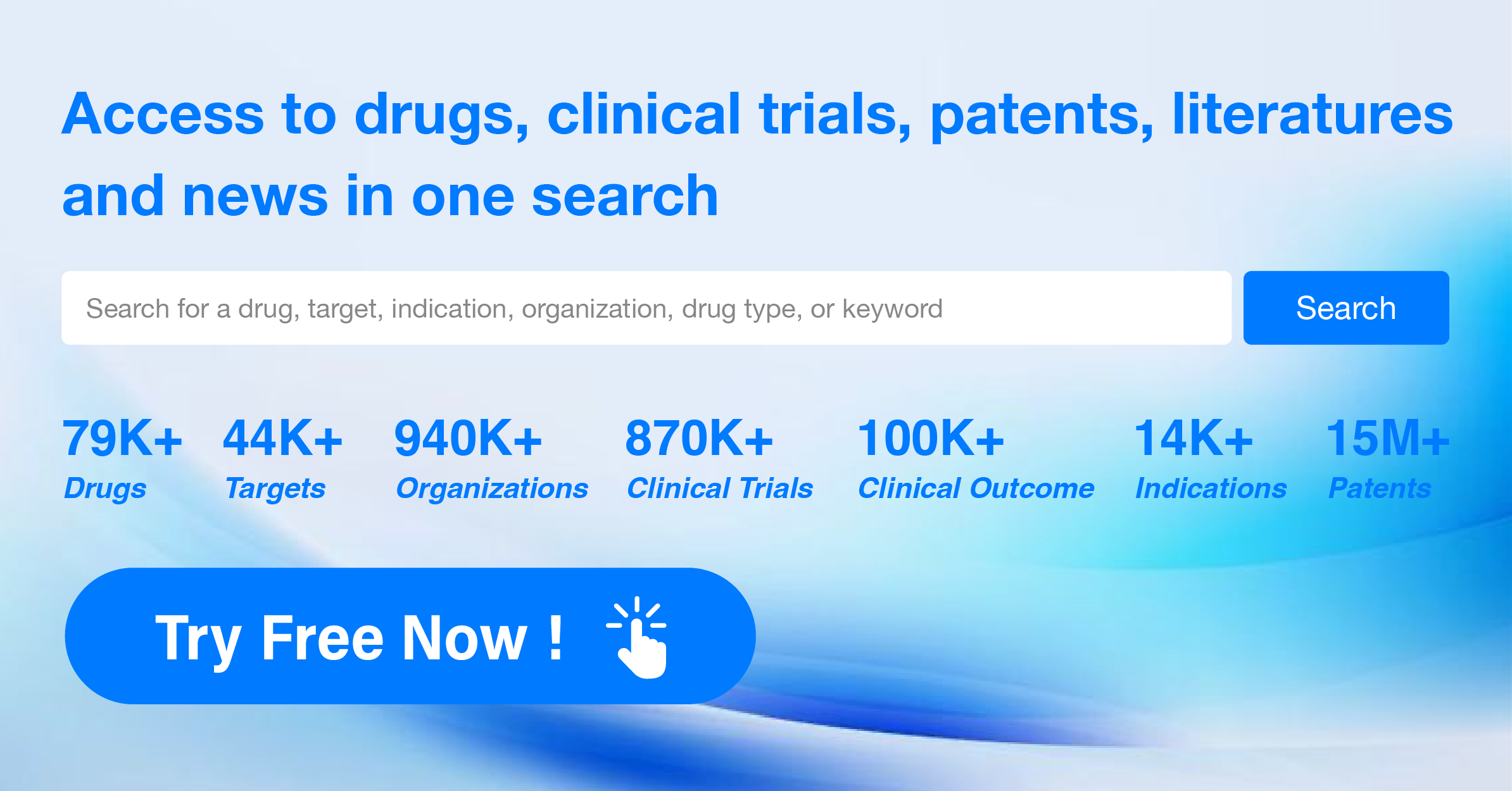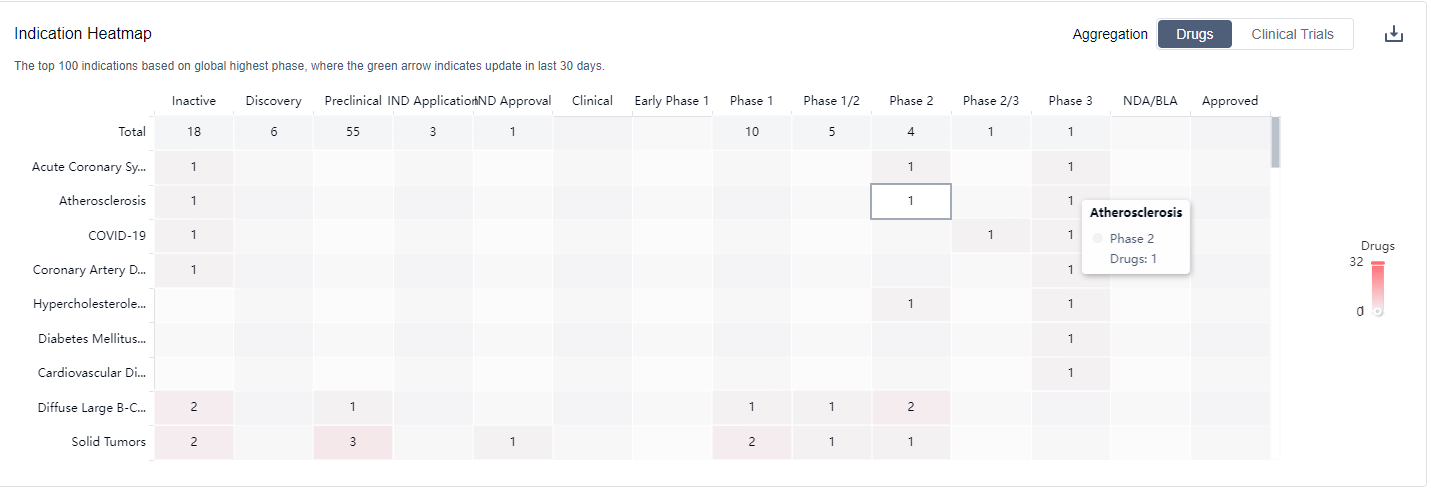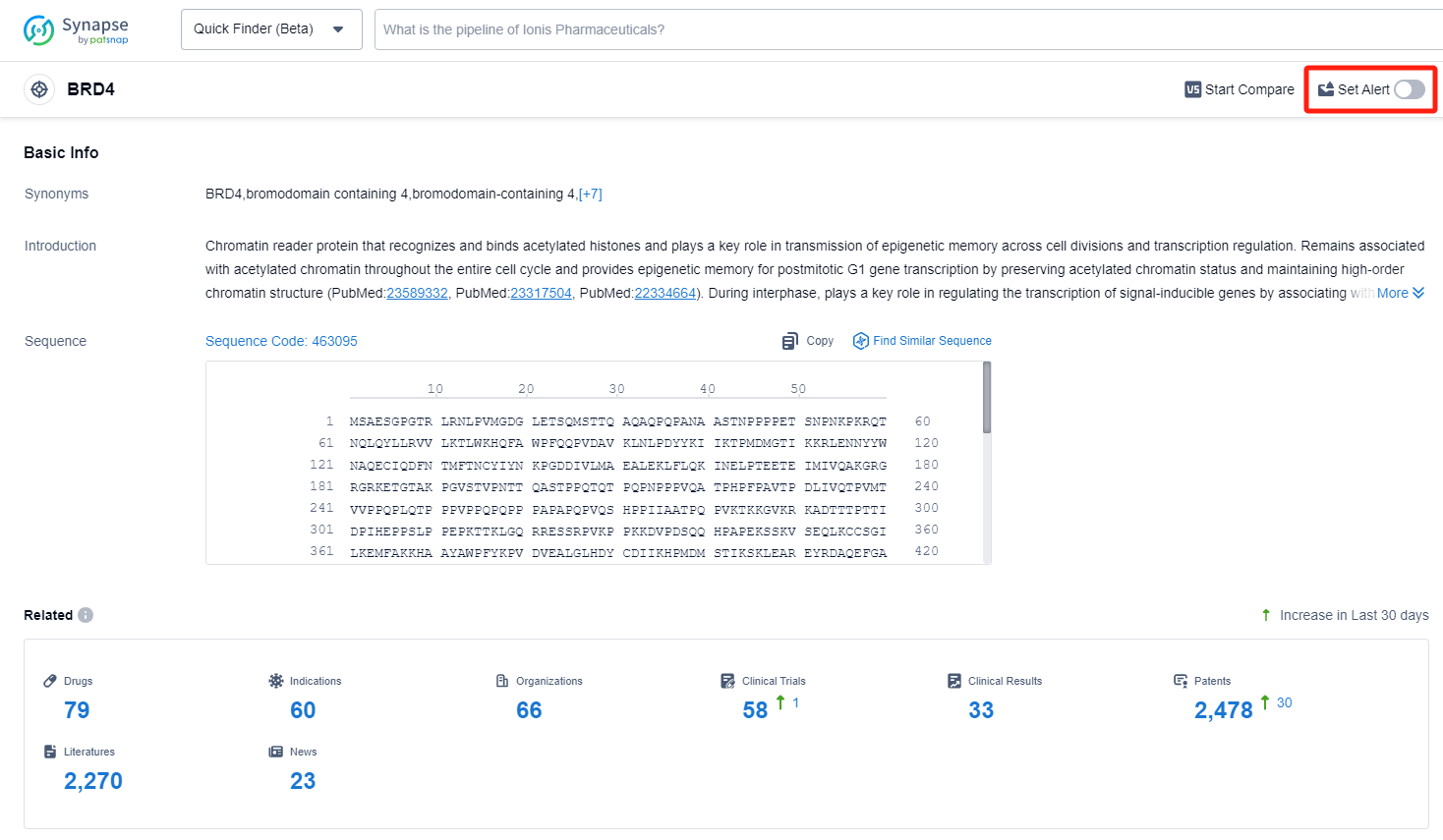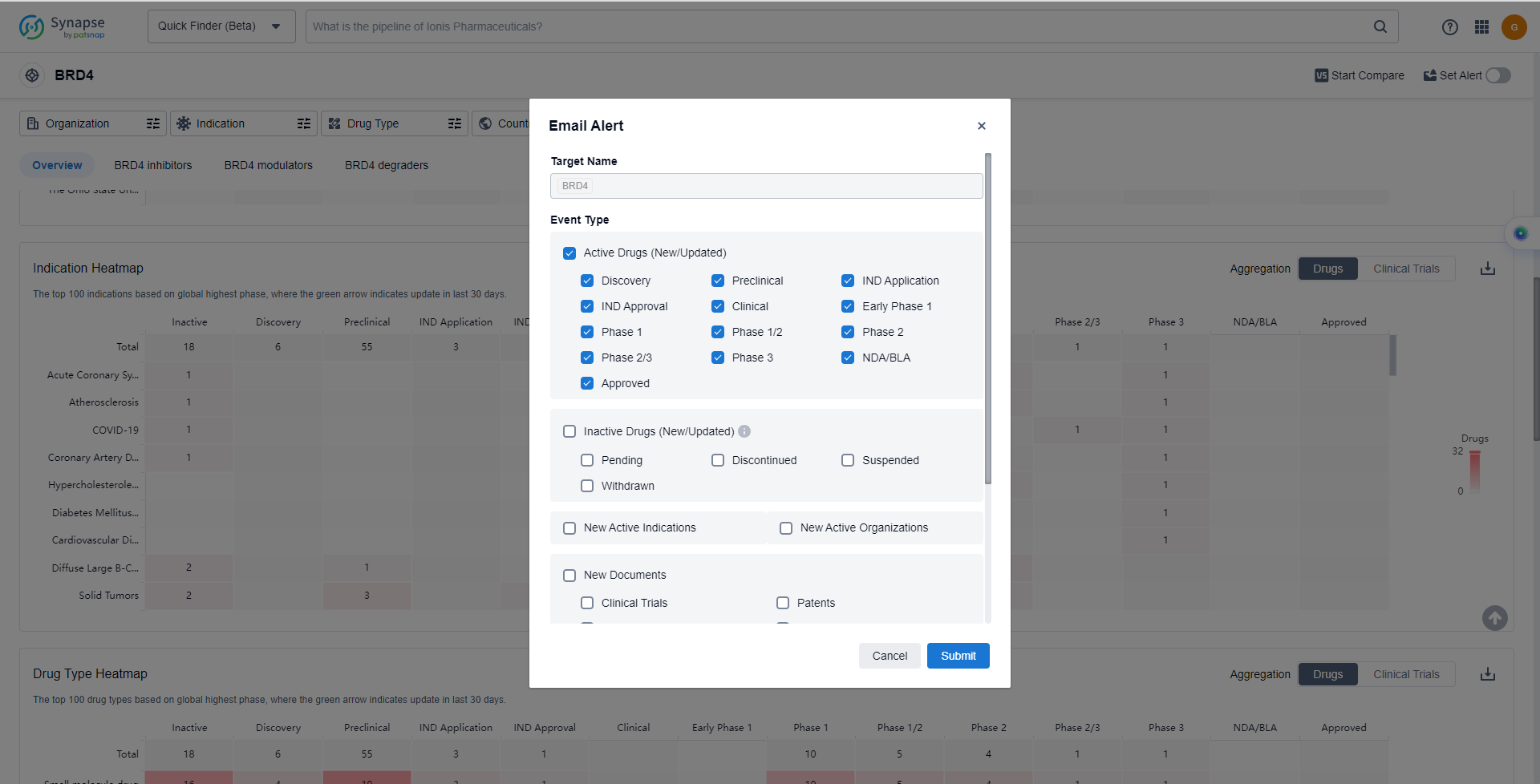What are BRD4 inhibitors and how do you quickly get the latest development progress?
BRD4, a member of the bromodomain and extra-terminal (BET) protein family, plays a crucial role in the regulation of gene expression and chromatin remodeling in the human body. It acts as an epigenetic reader, recognizing and binding to acetylated lysine residues on histone proteins, thereby facilitating the recruitment of transcriptional machinery to specific gene loci. BRD4's involvement in various cellular processes, including cell cycle progression, inflammation, and cancer, makes it an attractive target for therapeutic intervention. Inhibitors targeting BRD4 have shown promising results in preclinical and clinical studies, highlighting its potential as a therapeutic target for various diseases.
With the advancement of technology, researchers have developed a variety of BRD4 inhibitors through computer-assisted drug design, which work by targeting and inhibiting the BRD4 domain, inducing apoptosis in tumor cells, and thereby achieving anti-tumor effects. To date, reported small molecule inhibitors targeting BRD4 mainly include azole class (IBET151), purine class, quinone class and its derivatives (RVX-208), tetrahydroquinoline class (IBET726), and naphthylamine class, etc. Among these, JQ1 was the first publicly disclosed BET inhibitor, which achieves cell differentiation and apoptosis by competitively binding with the BRD4 fusion oncogene (BRD4-NUT), causing BRD4-NUT to dissociate from chromatin. However, JQ1 has a short half-life and increasing the dosage to maintain its effectiveness also increases the drug's side effects. Subsequent researchers addressed this drawback by structurally modifying JQ1, resulting in small molecular compounds like OTX015, MS417, CPI203, etc.
BET proteins are widely expressed in human tissues, participate in the regulation of gene transcription, influence cell cycle processes, and abnormal expression of BRD4 can lead to the occurrence of various diseases such as tumors, cardiovascular diseases, inflammation, etc. In recent years, drug research targeting BRD4 has received widespread attention, and monotherapy or combined therapy targeting the BET family has shown promising clinical results. However, most of the current inhibitors are non-selective with poor specificity. Therefore, there is a new direction in research to find new BET inhibitors with better selectivity and higher specificity.
How do they work?
From a biomedical perspective, BRD4 inhibitors are a type of drug that target and inhibit the activity of the BRD4 protein. BRD4 is a member of the bromodomain and extraterminal (BET) protein family, which plays a crucial role in regulating gene expression. By inhibiting BRD4, these inhibitors can interfere with the binding of BRD4 to chromatin, leading to the suppression of specific genes involved in various cellular processes.
BRD4 inhibitors have gained significant attention in the field of cancer research, particularly in the development of targeted therapies. Cancer cells often rely on certain genes for their survival and proliferation, and BRD4 inhibitors can disrupt the expression of these genes, potentially leading to the inhibition of tumor growth. Additionally, BRD4 inhibitors have shown promise in other disease areas, such as inflammation and cardiovascular disorders.
It's important to note that BRD4 inhibitors are still under investigation and clinical trials to determine their efficacy and safety profiles.
List of BRD4 Inhibitors
The currently marketed BRD4 inhibitors include:
For more information, please click on the image below.
What are BRD4 inhibitors used for?
BRD4 inhibitors have shown promise in other disease areas, such as inflammation and cardiovascular disorders. For more information, please click on the image below to log in and search.
How to obtain the latest development progress of BRD4 inhibitors?
In the Synapse database, you can keep abreast of the latest research and development advances of BRD4 inhibitors anywhere and anytime, daily or weekly, through the "Set Alert" function. Click on the image below to embark on a brand new journey of drug discovery!








![[177Lu]Lu-PSMA-617: Brief Review of its R&D progress and the clinical outcome in 2023 ESMO](https://synapse-static-patsnap-com.libproxy1.nus.edu.sg/strapi-static/Blog_cover_18_df71aab65d.jpg)